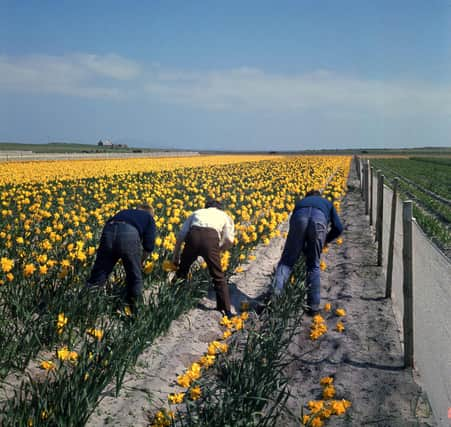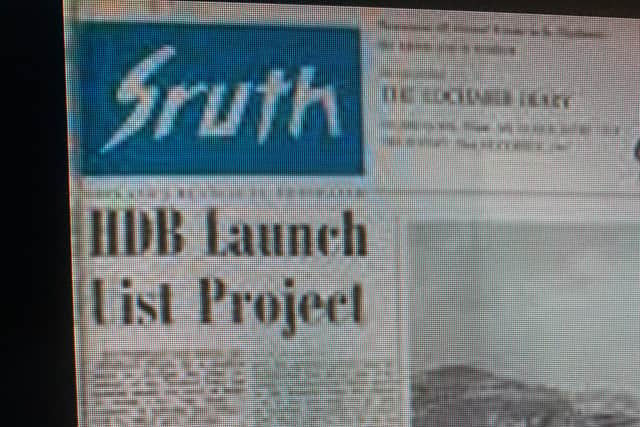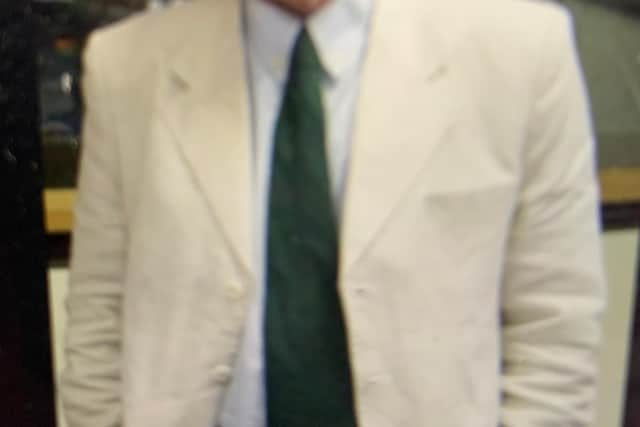How an island vision flowered and died


Exactly 50 years ago, the decision was taken to close down one of the most imaginative initiatives in modern Hebridean history – the Uist Bulb Project, based on the machair lands of the island’s west side with a processing factory at Locheport where the bulbs were graded and packed.
Duncan MacCuish from Balranald was site foreman in the three crofting villages at the centre of the trials – Bailemor, Kyles Paible and Cnoc a’ Lin. The results, he recalls, were excellent. “The bulbs grew very well, the yields surpassing Lincolnshire. It was disease-free land. Everyone was very pleased with what was produced”.
Advertisement
Advertisement
So why was the project killed off? Views on that decision are still tinged with suspicion that influences were at work which simply did not like the idea of large-scale economic activity in a rural setting. Equally, there were questions around the scale of a sustainable industry.


As Duncan MacCuish recalls: “They didn’t have enough land because, as the trials expanded, it was encroaching on crofting. The only way of getting the land was to create it, but that didn’t happen”. In other words, the full scheme would have involved reclaiming and irrigating a large area of Vallay Strand, for rotational growing of bulbs.
The scale of what might have been was enormous with potential, it was suggested in HIDB documents, for as many as 400 jobs – transformational for Uist. In the end, the size of what was projected may have become its undoing, particularly once a change of government created a less sympathetic climate.
Even in the trials period, there were up to 40 jobs in the harvesting season. But the next step into a full scale reclamation project ran into opposition which ultimately led to the whole concept being abandoned.
Advertisement
Advertisement
John Bryden, who was Head of Land Development at the HIDB, believes that if the trials had continued on a more modest scale, the project might have survived but the proposal to reclaim 1600 acres of of Vallay Strand carried too much risk – as well as investment equivalent to £30 million today. It also heightened the level of political controversy.


For as long as it lasted, the Bulb Project was a source of both great interest and employment in North Uist. John Morrison made a programme about it for BBC’s Eorpa in 1995 when memories were still quite fresh.
When a cine film made when the trials were at their height was unearthed for the programme, he was startled to see himself appearing in it as a child! He also recalls a little envy for the children a few miles away in Bailemor who were well paid to cut the heads from flowers.
The HIDB was created by the Labour Government in 1965, filled with bright people who believed they could really make a difference in attacking the deep-seated problems of the region, particularly on the crofting peripheries.
Advertisement
Advertisement
Land use was at the forefront of that agenda and a Hebridean bulb industry was not a new idea.
It was advanced by Dr A.R. Nisbet of the West of Scotland Agriculture College in the1950s. The late Jim Grassie, in ‘Highland Experiment’ about early days of the HIDB, wrote: “Under his guidance, trials on Tiree, Coll and Colonsay had been successful and, in 1956, 14 crofters and one farmer agreed to grow trial stock on Tiree and Coll”.
By the mid-1960s, the Hebridean Bulb Growers co-operative – which had recruited members as far north as Port of Ness – was on the point of failure due to lack of capital. It turned to the fledgling HIDB for support but the official who assessed the application, Robin Dean, concluded that a different approach was required – a single large-scale growing centre rather than dispersal throughout the islands.
Jim Grassie wrote: “In 1967, the Board appointed Dutch consultants to examine the Vallay Strand with a view to assessing its potential, once reclaimed, as a bulb-growing area.
Advertisement
Advertisement
“This was home from home for the Dutch. The Strand is a tidal bay and presented problems familiar to those overcome in the construction of fertile polders in Holland.
“It was not surprising therefore when they produced answers which would have been familiar in The Hague. They envisaged damming the Strand to reclaim about 1600 acres, just under half of which would be devoted to bulb growing and 400 acres given over to an irrigation storage reservoir”.
At that time, Holland’s bulb industry was facing challenges from lack of capacity and also prevalence of disease. One attraction of North Uist was its virus-free soil. There are recollections of a major Dutch company being interested in partnering with the development, if it had gone ahead on the scale the consultants’ report envisaged.
Before that became an issue, however, the trials were showing great promise. “Daffodils, tulips, crocus and hyacinths brought brilliant colour to that corner of the Hebrides as well as hope of new enterprise and a fresh source of income,” wrote Jim Grassie. “In 1967, some six acres were planted around Paible; in 1968, 23; in 1969, 33.” The Board reported that “the results in both quantity and quality were excellent”.
Advertisement
Advertisement
On that basis, the Board submitted a formal proposal for the much larger scheme to the Secretary of State for Scotland, Willie Ross, who had visited North Uist to see progress for himself. However, the technical advice was that further research was needed on reclaimed land. This created, in effect, a catch-22 – the land had to be reclaimed in order to justify a scheme which was to be based on reclamation of the land.
As Jim Grassie wrote: “The Board’s experimental work was being conducted on the machair and the results from that, according to DAFS officials, could not be used as evidence of likely results from reclaimed land. There was no way round that objection.”
Politically, the clock was ticking. At that time, anything the HIDB did in relation to land ownership or use was high profile and politically sensitive.
The legislation gave the Board powers to initiate high risk projects at its own hand to test feasibility particularly in land use. The Board in these early days also ran experiments in shrubs, blueberries and red deer farming.
Advertisement
Advertisement
The political climate changed with the election of a Conservative government in 1970, suspicious of the board and its unique powers.
Jim Grassie wrote that DAFS, was “not happy with the initiative from the start, had set a condition that was impossible to fulfil”. There was also a widespread local belief that the crofting landlord in the area since 1961, the Earl of Granville, had brought his considerable influence to bear in Government circles.
As Duncan MacCuish points out on a purely factual basis: “The landlord had built his house in a very quiet spot. If the scheme had gone ahead, it would have become the centre of North Uist”.
Or were the reasons for the larger scheme’s rejection by Willie Ross’s Tory successor, Gordon Campbell, well-founded? John Bryden a young recruit to the HIDB was Head of Land Development.
Advertisement
Advertisement
He subsequently co-wrote the seminal work “Agrarian Change in the Scottish Highlands” which reflected on the Uist scheme, while still working for the HIDB.
The controversy emerging “both within and without the Board” over the larger scheme, he wrote, led to the later trials being under-financed. “It is easy to criticise the whole scheme with hindsight. Insufficient experimentation had been carried out before the project was launched and it seems probable that the only way to carry out such experiments properly to the satisfaction of all would have been to reclaim a part of Vallay Strand and lay on irrigation.
“This in itself would have been a very costly process. At the same time, the Board was clearly anxious to find projects which would have a significant impact on low incomes and unemployment in the Western Isles and the appeal of the Bulb Scheme was understandable in this context”.
This week, John Bryden dusted down his reflections 50 years on. He recalled: “I was never really a fan of reclamation on the scale proposed. If they had carried on with the crofters on the machair doing it, that would have allowed it to expand gradually, but having a big scheme seemed very risky to me. The data to justify it wasn’t there”.
Advertisement
Advertisement
Were there outside influences at work to kill off not just the Vallay Strand plan but the project as a whole? “I believe that was so,” he recalls. “I have some memory of that but I couldn’t put my finger on it”. Could bulbs still become a Hebridean crop? “I don’t see why not”.
That’s also the view of Dr Keith Dawson, one of the UK’s leading crop scientists – in theory. But he suggests the economics of getting the product to market would have to be looked at very carefully. “Even if the climate and soil are ok, there are challenges which weren’t there 50 years ago – or even 12 months ago!”.
He explains: “Brexit has created a lot of new barriers to EU markets – the same problems seed potatoes are having - and also you need someone to pick them. The Angus bulb industry is having problems because they were dependent on migrant labour which isn’t available any more”.
It seems likely then that bulbs as a Hebridean crop will remain more a piece of interesting history than a future avenue to floral prosperity. Unless, of course, small might become beautiful and the 1950s idea revived with individual producers bringing colour to crofts and income to pockets.
In the constant search for “new” ideas, may a thousand flowers yet bloom.